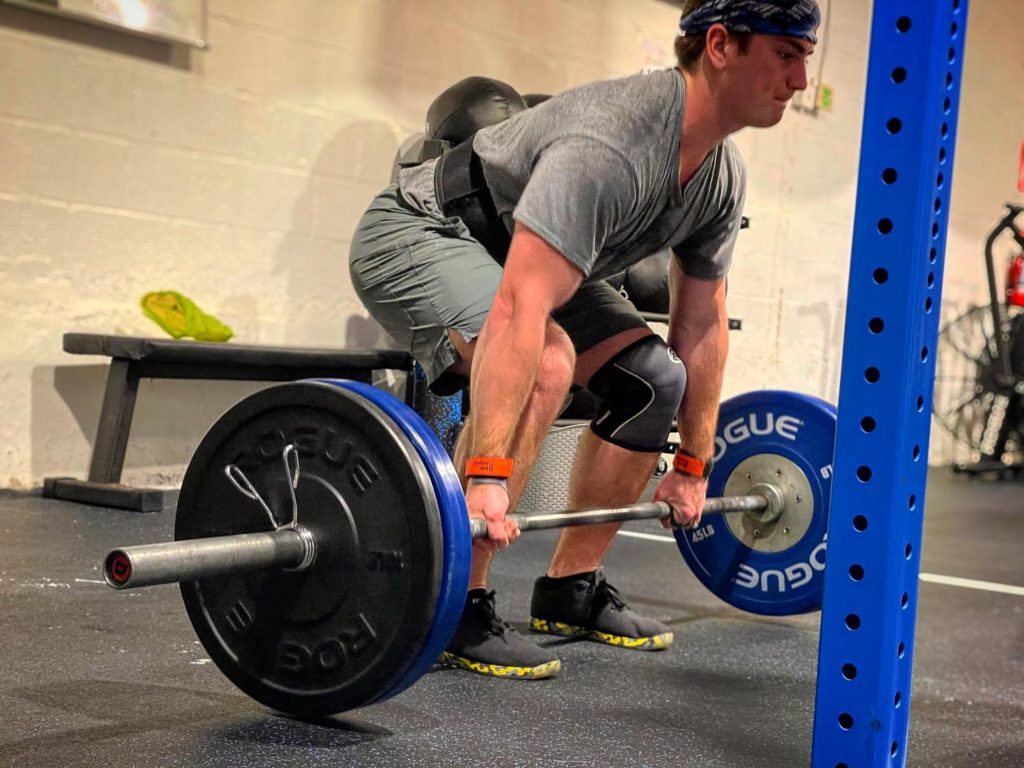You just put on all this weight on your bar. You’re super amped to lift it and you take a step back. When you go to take that step back the unthinkable happens! The plates on your bar start to slide and through you off balance. Now you have to drop the barbell and there are plates everywhere! What’s a lifter to do about this catastrophic problem?
Well, luckily for all of us a guy named Gary R. Polson* made the original patent for the Barbell Collar! It’s a magical washer that uses friction to keep the weight you have a on a barbell…on!
*(This is the only historical data I found on the barbell collar. I’m pretty sure it was such common sense that we needed this from the get go that barbell manufactures just started making them to sell with their barbells starting in 1910 with the Berg Barbell Company).
Now, in our gym we actually have at least one of every type of these lovely things! So, let’s go over these amazing little doodads that allow us to hit PR’s and keep us safe!
What is a Barbell Collar?
Simply put, a barbell collar (also called clamps or slips) is ring shaped object with a diameter that is larger than a sleeve of a barbell and when closed fits snuggly around the sleeve. They use friction through either coiled metal, fasteners, or rubber to stop the weight from moving. While some are far more effective than others, they can all be found in any gym that uses a barbell so that athletes don’t have to worry about losing their plates while they lift.
What are the different type of collars?
Spring Collars:
Spring loaded collars are the most common versions of this invention that you’ll see in a gym. They are made of metal and are coiled 2-4 times in the shape of the barbell sleeve with nice little metal bunny ears for you to grab to loosen the coils for easy use of the collar.
The reason these little things are so ubiquitous is that they are incredibly cheap to manufacture and sell. They can stand up to years of use without showing any wear and for most people who lift weights, they do the job they are meant to!
The problem is that because they have an easy design to open and close, any sort of dropping of a barbell will actually cause them to move off the sleeve. This makes them not ideal for a olympic lifting gym or a CrossFit class with a ton of barbell cycling as you would have to reset the collars after every couple lifts in order to maintain safety. You can put them on backwards with the bunny ears facing inwards to mitigate this, but it doesn’t stop the issue.
Lockjaw/Snapping Lock/Locking Collars:
These are the most common collars that you will see at CrossFit gyms and olympic weight lifting gyms with group classes. These plastic collars have two large rubber pads to create large amounts of friction and use a ratchet type lock to pull those pads tightly onto the sleeve of the barbell. While they are more expensive that spring collars (about 300% more expensive), they also do a much better job.
If you put these on your bar and they are high quality, no matter how much you drop your barbell, your weights will not move for the duration of your workout.
The only problem is that while the rubber and locking mechanisms are highly effective, the plastic is not as durable as their steel counterparts. While they aren’t frail by any stretch of the imagination, a plate dropping the wrong way on one of these can break the latch or the whole collar all together meaning you’ll have to shell out another $45-$70 to replace these bad boys.
Spin-lock/Russian Collars
While we do have one pair of these, they are more like the skeleton your high school biology teacher had. Leave it in the corner and wonder when we will ever use it and find out that it doesn’t get used the whole year.
Spin lock collars are intense. They weight about 2kg (4.4 lbs) each and are made up of two pieces: a rifled male end that goes are the barbell first and a rifled female end that screws onto the male end. There are also versions of this that have a 2nd spinning lock that locks these two pieces to the barbell with another screw.
Basically these have 1 use: make sure heavy weights don’t move during world record/competition attempts. That’s it.
While they look super cool and gnarly, they take a considerable amount of time to get on and off a barbell and they add weight to the load you’re about to lift. Get a pair if ya like owning crazy knick knacks but, the best route is to stick with the previous two for everyday use!

